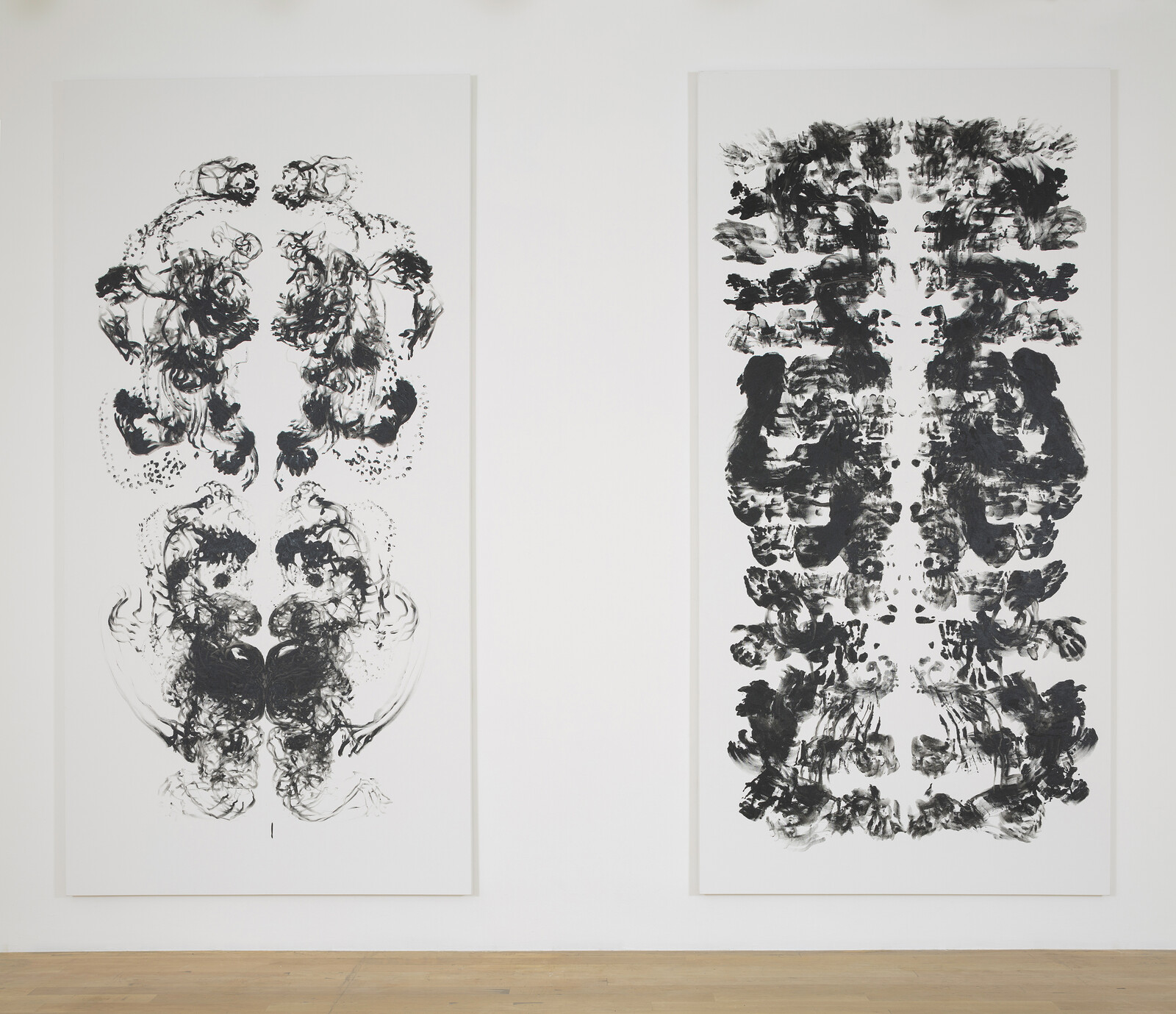March 4–June 4, 2017
Dundee Contemporary Arts
152 Nethergate
Dundee DD1 4DY
UK
Facebook / Twitter / Instagram
The Fruitmarket Gallery
45 Market St
Edinburgh EH1 1DF
UK
Facebook / Twitter / Instagram
Dundee Contemporary Arts and The Fruitmarket Gallery, Edinburgh are delighted to present MARK WALLINGER MARK, the first exhibition in Scotland of work by Turner Prize-winning artist Mark Wallinger.
The exhibition is in two parts, shown simultaneously in the both venues from Saturday, March 4 until Sunday, June 4, 2017. It features Wallinger’s most recent body of work: the “id Paintings.” These are presented alongside a series of sculptures, films and wall based works that further explore the themes of identity, reflection and perception addressed in this new work.
The “id Paintings” (2015–16) have grown out of Wallinger’s extensive series of self-portraits, and they reference the artist’s own body. His height—and therefore his arm span—is the basis of the canvas size. They are exactly this measurement in width and double in height. Wallinger uses symmetrical bodily gestures on the two halves of the canvas to mirror one another, recalling the bilateral symmetry of Leonardo da Vinci’s Vitruvian Man and more explicitly the Rorschach test. Created by sweeping paint-laden hands across the canvas in active freeform gestures, the “id Paintings” bear the evidence of their making and of the artist’s encounter with the surface. In recognising figures and shapes in the material, the viewer reveals their own desires and predilections while trying to interpret those of the artist.
In Edinburgh the “id Paintings” are shown among other works concerned with the staging of identity. In Ego (2016), two iPhone photographs depict the hands of their artist/creator. The work, doubly hubristic, is a playful recreation of Michelangelo’s Creation of Adam.
The show also features the found poem, Adam (2003) (the first person singular), an index of the first lines of poems beginning with “I” in Palgrave’s Golden Treasury, a breathless inventory of the self’s passions. A wall of “Self Portraits” (2007–15) is part of Wallinger’s extensive series that takes the capital “I,” the word we all have for ourselves, and tries to extract some expressive force from it. For the installation According to Mark (2010), a hundred empty chairs are marked “MARK” as if they belonged together, and conjoined further as a congregation by perspectival strings meeting at a God-like eye high on the facing wall. I am Innocent (2010), sends Velazquez’s Pope spinning, while all through the night the artist, dressed in a bear suit, wanders the glassy immensity of Berlin’s Neue Nationalgalerie in Sleeper (2004).
In Dundee, themes of circularity and symmetry continue. 12 of Wallinger’s “id Paintings” surround a new work, Self (Symbol) 2017, a capitalized “I” in Symbol font, aggrandized as a three-dimensional statue the height of the artist. For Shadow Walker (2011) the artist filmed his shadow walking ahead of him, the figure the sun draws on the London street assuming an autonomous existence as “real” as the artist’s actual body. For MARK (2010) the artist chalked the title all over the city of London within the parameters of single standard sized brick. This deadpan tagging is rendered as a photographic slideshow, each MARK at the vanishing point of 2,265 images. Time And Relative Dimensions In Space (2001), a mirrored TARDIS, is an object trying to shrug off its corporeal form and vanish to some other place and time altogether.
Time is also at play in two large video works. We follow the work of three scaffolders on a beach in Construction Site (2011), as they erect a tower aligned perfectly to the horizon, only to disassemble it and start all over again. In Ever Since (2012) a life-sized projected image of a barber’s shop is given eternal life as one revolution of the barber’s pole is animated, spiraling upward forever. In Wallinger’s new four-screen video work, Orrery (2016) the revolutions of an oak tree situated in the middle of a municipal roundabout in Essex are portrayed through the four seasons and by extension become a contemplation of the orbit of our planet around the sun and our place in the universe. The scale and content of Venus and Mars (2016) is ambiguous. These circular photographic images of human flesh, isolated from their original context, could be immense and distant celestial bodies.


